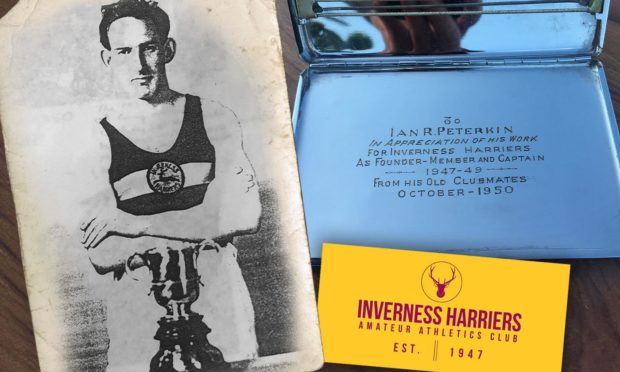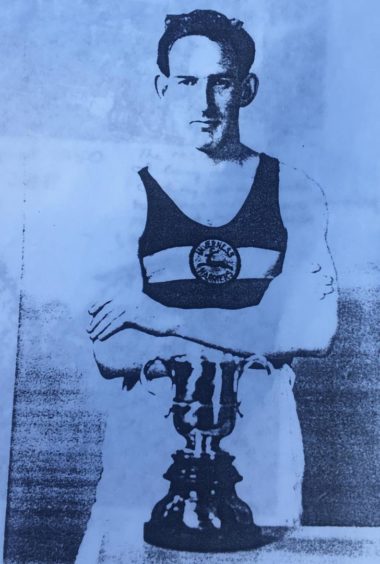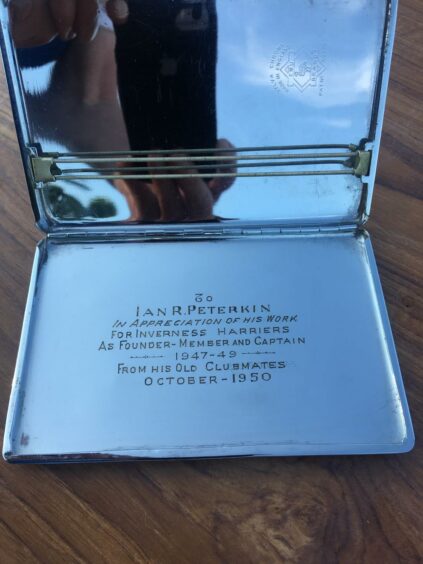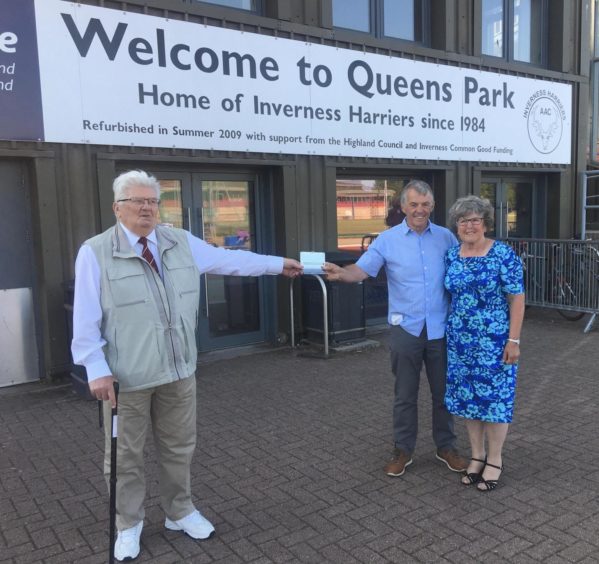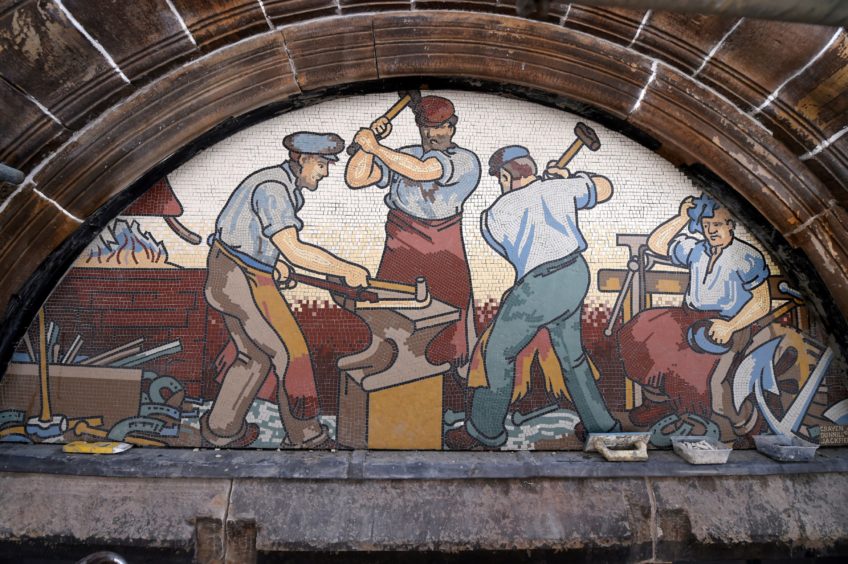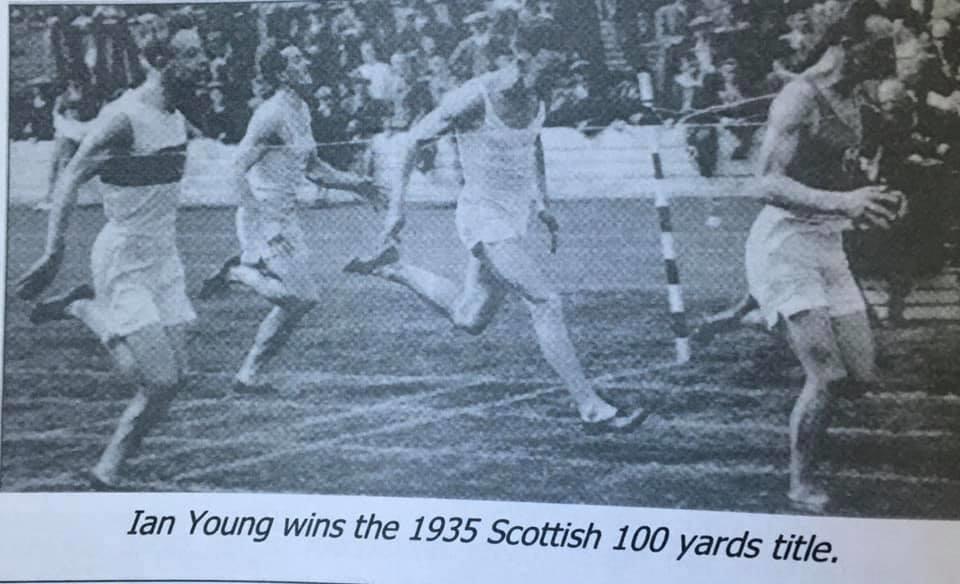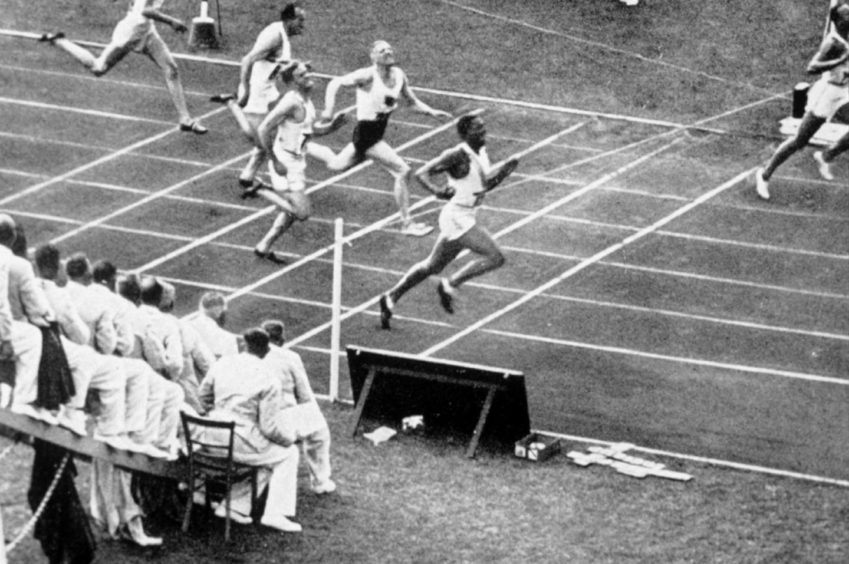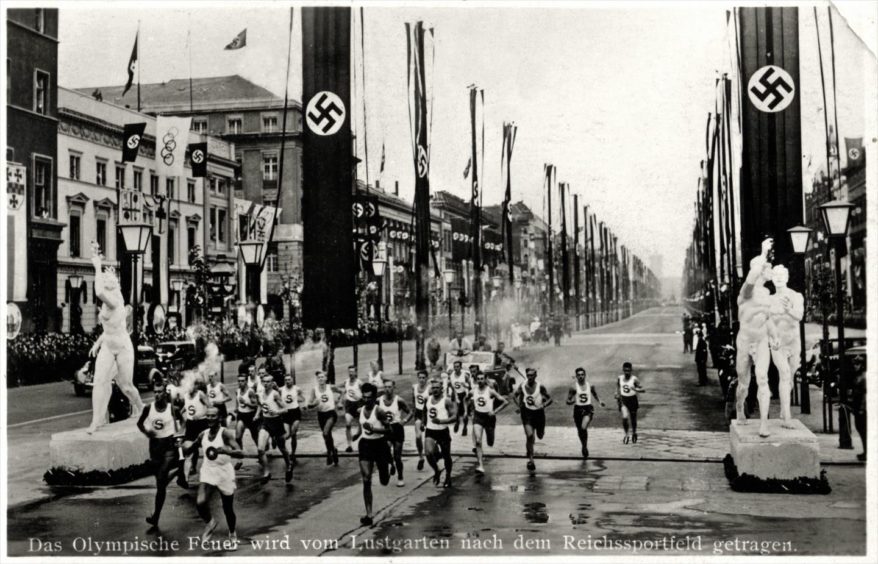A souvenir which throws light on the origins of an Inverness amateur athletics club has been discovered more than 400 miles from the city.
The 70 year old silver cigarette case belonged to Ian R Peterkin, a founder member of the Inverness Harriers, and has now been returned to the club.
The gift of a cigarette case to an athlete might seem strange now, but in 1950 it was most acceptable.
For Mr Peterkin, it was a farewell gift from the club he helped found.
It bears the inscription ‘To Ian R Peterkin/In appreciation of his work for Inverness Harriers as Founder-Member and Captain/1947-49/ From his old clubmates /October 1950’.
Leaving Inverness
Mr Peterkin was ‘exiled’ from Inverness for work purposes to the village of Wishingborough, around 3 miles from Lincoln in 1950.
When he died from Covid aged 93 last December, neighbours Barry and Louvain Jackson were in charge of his effects and found the cigarette case.
They contacted the club through Facebook and, while in the Highlands to oversee the burial of Mr Peterkin’s ashes near Grantown on Spey, visited Inverness Harriers’ Queens Park base to present the case to the club.
It was received by the longest surviving life member, 87 year old Ian Tasker, the only person who now remembers Ian Peterkin as an Inverness athlete.
“We got to know Ian about 20 years ago when we moved in next door to him,” said Mr Jackson. “He was an extremely talented person but never married and remained very smart right to the end. He never had a TV but had athletics photos on his wall and was always making things.”
Ian Peterkin’s creative talents certainly rang a bell with Mr Tasker who joined the Harriers aged 16 shortly before Ian Peterkin left Inverness.
“He worked for AI Welders and actually made a starting pistol for the club which fired blanks,” Mr Tasker said. “He showed it to me once, but I never got to know him all that well since we didn’t overlap by that long.
“But he certainly did a lot for the club just when it was getting on its feet in the very early years and it’s great to get this souvenir.”
Inverness Harriers
Ian Peterkin was Inverness Royal Academy sports champion in 1945.
The following year he won the North of Scotland AAA 440 yards title and went on to join Inverness Harriers on its foundation in 1947 by former local councillor Tom MacKenzie and others.
He also left behind pages of notes and photographs from his time with the club and the Jacksons have donated a copy to the Harriers.
Charles Bannerman, who wrote ‘Maroon and Gold’, the club’s official history, in 2014, welcomed the new documents.
“When I wrote the book, virtually nothing was known about the club before 1950 so these papers are an absolute goldmine of completely new information which may even form the basis of a prequel chapter,” he said.
The incident has reminded Charles of another ‘exiled’ Invernessian running in the 1920s and 30s, pre-Inverness Harriers.
Ian Young remains the only Invernessian to have won Commonwealth (at the time Empire) Games medals in athletics, taking bronze in the 100 yards and the 4×110 yards relay in 1934.
Charles describes in Maroon and Gold how athletes suffered acutely from the lack of an athletics club in the town before the foundation of the Inverness Harriers.
“Ian Young was a member of the family which owned the drapery firm of Young and Chapman, and Inverness institution in Church Street and later in Union Street.
“By the 1930s he was one of Britain’s leading sprinters, but with no club in Inverness he ran for Edinburgh Harriers, which he had joined during his drapery apprenticeship in the city.”
Young responded to the lack of a local club by founding the Inverness YMCA Harriers Club, with Olympic champion and world-record breaker Eric Liddell, famously portrayed in the classic film Chariots of Fire, as honorary president.’
The Inverness YMCA Harriers seems to have been an ad hoc body set up to allow Young to compete locally in the name of his home town.
Could have lined up against Jesse Owens
Young was good enough to gain selection for the 100 and 200 yards at the famous 1936 Berlin Olympics in Nazi Germany.
But he was ultimately denied the opportunity to compete against the legendary Jesse Owens because his father became ill and he had to take on the family business.
He competed very little after that.
In 1953 other members of the family decided to sell the business to Aberdeen company Benzie and Miller.
Bannerman suggests that probably accentuated by his sacrifice 16 years previously, this led to a major family rift, whereupon Young left Inverness for good and eventually settled in Devon where he became honorary president of Dartmouth AC.
He was IRA sports champion in 1926, and aterwards continued to train on the school field at Diriebught.
Often acting as starter would be Duncan Fraser who founded the butcher’s shop of that name on Queensgate and was a major player in north athletics for many years.
It seems that Ian never forgot his school or his close encounter with ‘Team GB’ of 1936, Bannerman writes.
“Indeed the very next year on 12th May IRA’s log book records that on the coronation of King George VI, Ian Young presented every pupil in the primary department with a flag.”
Technology wasn’t on Young’s side when it came to the fractions of a second for 100 yards that brought him under 10 secs, breaking the Scottish record.
His time in the final is recorded as 9.8 seconds, but there were no wind gauges and the officials could only estimate the wind by looking at flags and guessing. In the end they decided only to accept the 9.9 seconds he recorded in his heat.
Nevertheless, the name of Ian Young, the first Scotsman ‘legally’ to break 10 seconds for 100 yards within Scotland figures prominently in the limited programme of amateur athletics which existed in the north in the 1930s.
